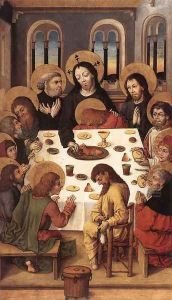Master of the Housebook Paintings
The Master of the Housebook, also known as the Master of the Amsterdam Cabinet or the Master of the Lovers, was a German engraver and painter active during the late 15th century, specifically from around 1475 to 1490. The anonymous artist derives his name from one of his most famous works, the 'Housebook' ('Hausbuch'), a manuscript that contains a diverse collection of texts and images on various subjects, including astrology, alchemy, love, and warfare.
The Master of the Housebook is considered part of the Northern Renaissance and is known for his detailed and often witty engravings, which display a keen observation of human character and domestic interiors. The artist's true identity remains a mystery, and he is known only by the body of work associated with him. This body of work suggests that he was likely trained in the Middle Rhine region of Germany and was familiar with the work of other contemporaries such as Martin Schongauer.
The Housebook displays the artist’s versatility, including secular and religious subjects, and reveals his interest in everyday life as well as courtly culture. His engravings were innovative, showing a masterful use of cross-hatching to create tonal effects, and were some of the earliest examples of pure etching in Europe. The Master of the Housebook's work also includes several paintings, although few have been securely attributed to him.
Despite the significance of his work, the lack of concrete biographical information has led to various speculations and attributions. Some art historians have tried to identify him with known artists of the time, but none of these hypotheses have gained universal acceptance. His influence, however, is evident in the work of later artists, and his prints were collected and copied throughout Europe. Today, the Master of the Housebook's work provides valuable insight into the cultural and artistic milieu of the late 15th century.







